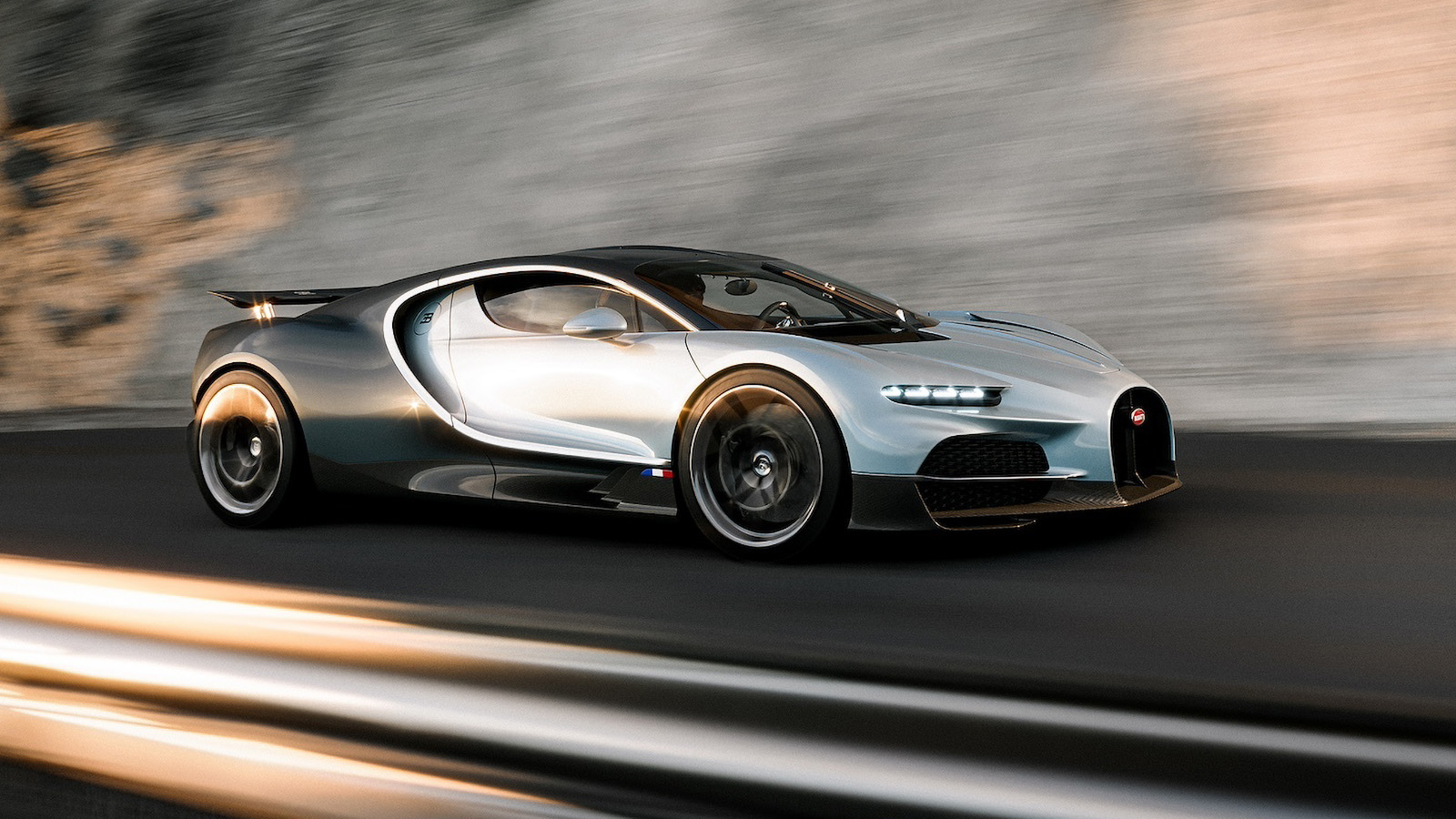

Late Thursday night in Molsheim, France, Bugatti unveiled its next hypercar to follow the lineage of the Veyron and Chiron. It’s called the Tourbillon, so-named in the spirit of ultra-high-end watches, as Bugatti CEO Mate Rimac explained during the car’s reveal. Eight years after the French automaker first began production of the Chiron, the Tourbillon marks a new era for the marque, as its first hybrid flagship.
If you’ve seen its predecessors, you shouldn’t be too surprised by the exterior design of the Tourbillon: It basically evokes a Chiron, but smoother, with an arrow-like, pointed nose, and more curvaceous form overall. That classic Bugatti “arc” that cuts along the bottom edge of the door, up and around the side window, has been relaxed, and isn’t quite as circular as before. The lightbar at the rear calls to mind some of McLaren’s work, while the exposed engine cover is shrouded only in the loosest sense by a thin bridge that reaches from the rear deck up to the roof. Overall, the body is 33 millimeters shorter than the Chiron’s.




Bugatti Design Director Frank Heyl explained the rationale behind the Tourbillon’s pointed nose at the reveal, saying that the company’s previous record-setting creations taught the firm that “if you reduce frontal area, it has a greater influence on the speed of the vehicle [than] anything else.” Still, the classic Bugatti horseshoe grille is wider than we’ve ever seen it, and more accentuated by the rake at the front.
The Tourbillon’s interior is defined by mechanical, analog action, and the only screen of significance on the dash appears to be very tiny—in fact, it wasn’t present in the renders shown during the car’s reveal. But the steering wheel is the real party piece, as it reaches around the instrument cluster, so that the gorgeous, watch-inspired gauges are visible through the inside of the rim, as the rim rotates around it. Overall, think Spyker’s old aero-deco motif, but amped up to new heights.




The Tourbillon is powered by an 8.3-liter, naturally aspirated V16 that can rev up to 9,000 rpm and develops 1,000 horsepower all by itself. Aided by three electric motors, the powertrain churns 1,800 hp in total. As it’s not a W16, like the Chiron and Veyron previously had, the design of the internal combustion engine is more traditional—two banks of eight cylinders a side, rather than the W16’s layout, which was more like a pair of V8s sharing a 90-degree crankshaft. This setup also makes the new V16 about 10 inches longer than the old W16.
Of course, the W16 also had four turbochargers, while the new engine is free-breathing. Rimac says the driver will have full control over which aspects of the powertrain they want to use, whether that’s ICE only, battery power only, or the full grunt of the total package. In the latter mode, the Tourbillon can go from a standstill to 62 mph in a reported two seconds flat, on the way to a 276-mph top speed.



Even with the longer engine, the Tourbillon’s wheelbase measures a mere 2.9 millimeters longer than the Chiron’s, and its overall curb weight is somehow less as well. No exact numbers were given, as Rimac says that engineers are still pinning down the final numbers, but the CEO said it marks the first time a pure-ICE vehicle’s hybrid replacement weighs less than its gas-only predecessor. Count on Bugatti to pull off the unthinkable. Deliveries will begin in 2026, and the company plans to make 250 examples.
Got tips? Send ’em to tips@thedrive.com